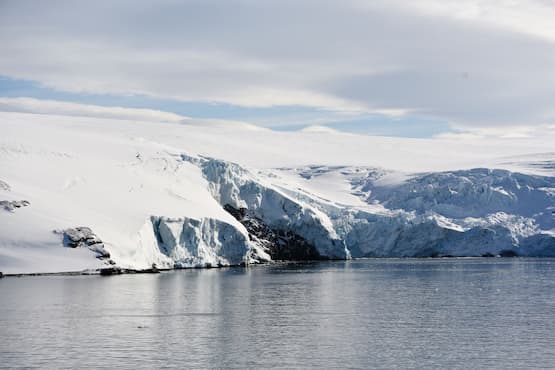- The Southern Annular Mode and El Niño-Southern Oscillation are causing large year-to-year variations in Antarctic snow accumulation and surface melt.
- Findings from two new research papers are supporting efforts to predict how Antarctica will respond to future climate change.
- Change in the Antarctic creates ripple effects all over the planet, including sea level rise and shifts in weather patterns.
New Monash research has untangled the influence of regional climate drivers, including the Southern Annular Mode (SAM) and the El Niño-Southern Oscillation (El Niño), on the Antarctic Ice Sheet. Snow accumulation and surface melting are two important processes that are key to predicting how Antarctica will contribute to future sea level rise.
The findings are critical to addressing knowledge gaps in models used to predict future sea level rise and its impacts on coastal communities.
The research, published as two papers in Geophysical Research Letters, was led by Monash University scientists Jessica Macha, Dominic Saunderson and Professor Andrew Mackintosh from Securing Antarctica's Environmental Future, an Australian Research Council research initiative.
SAEF Chief Investigator and former IPCC Lead Author Professor Andrew Mackintosh says that one of the most urgent questions facing Antarctic scientists is how much the Antarctic Ice Sheet will contribute to global sea level rise.
"The IPCC Sixth Assessment report states that there will likely be 40 - 77 centimetres of sea level rise by 2100, but more than 2 metres can't be ruled out," Professor Mackintosh said.
"Our lack of understanding of snowfall and surface melt processes on the Antarctic ice sheet affects our ability to predict ice sheet and sea level futures accurately.''
"Our new research has looked at two processes influencing this uncertainty: the SAM and El Niño."
The SAM describes the north-south shift of westerly winds in the Southern Hemisphere. It has three phases — positive, neutral and negative — and affects rainfall, snowfall and temperatures across the region, including Australia and Antarctica.
A negative SAM means the winds are further north and weaker in Antarctica, causing more melt on the ice sheet's surface. A positive SAM means the winds are further south and stronger in Antarctica, causing less ice to melt.
New research led by SAEF PhD candidate Dominic Saunderson has investigated the amount of surface ice melt in East Antarctica each summer over the past 40 years and identified the physical processes responsible, including air temperatures, snowfall, wind speeds and cloud cover.
"The results show an interesting picture. For example, in Wilkes Land, where Australia's Casey Station is, a negative SAM corresponds to warmer air temperatures heating the surface and leading to more melt," Mr Saunderson said.
"Meanwhile, in Dronning Maud Land, a negative SAM corresponds to less snowfall and darker surfaces, which absorb more sunlight and cause more melt. This process is also known as the snowmelt-albedo feedback."
SAEF PhD candidate Jessica Macha's research investigated the influence of different El Niño types on snowfall accumulation in Antarctica. El Niño describes the warming of ocean surface temperatures in the central and eastern Pacific Ocean, which leads to a shift in weather patterns across the Pacific, including in Australia and Antarctica.
El Niño events can be classified into two types: the Central Pacific and the Eastern Pacific El Niño, which correspond to where the warmest ocean surface temperatures are located in the Pacific Ocean.
Mrs Macha and the team found that these two types of El Niño have distinct influences on snowfall patterns across Antarctica.
"During Central Pacific El Niño events, snow accumulation increases in the western Ross Sea region and decreases in the Amundsen Sea region. Meanwhile, during Eastern Pacific El Niño events, there are similar regional effects but to a lesser extent," Mrs Macha explained.
"In other parts of Antarctica, such as Dronning Maud Land and Wilkes Land, the type of El Niño influences snow accumulation in different ways. These findings help us better predict snowfall patterns across Antarctica in order to understand its current state of balance and future contribution to sea level rise."
"It is especially important to understand the impact of El Niño, as these events are predicted to increase in frequency and intensity in the coming decades."







